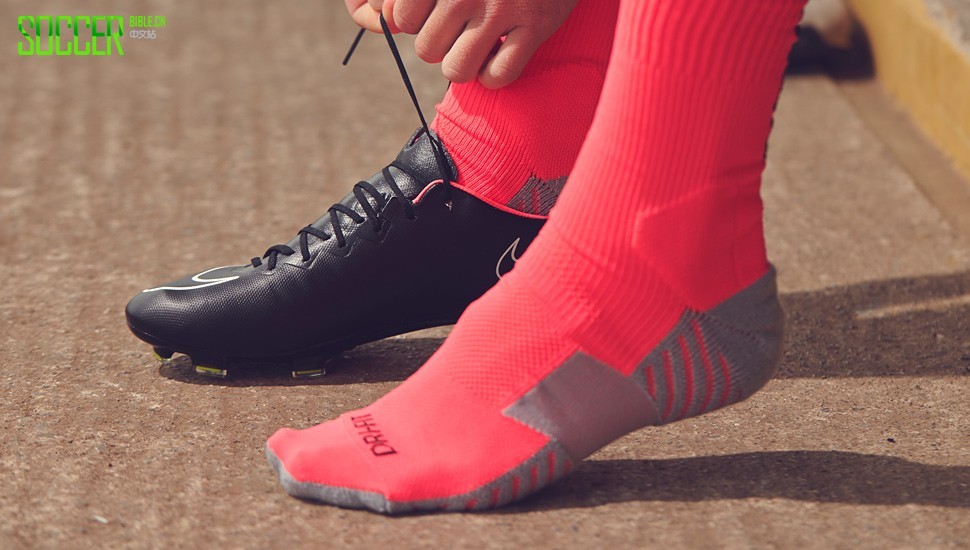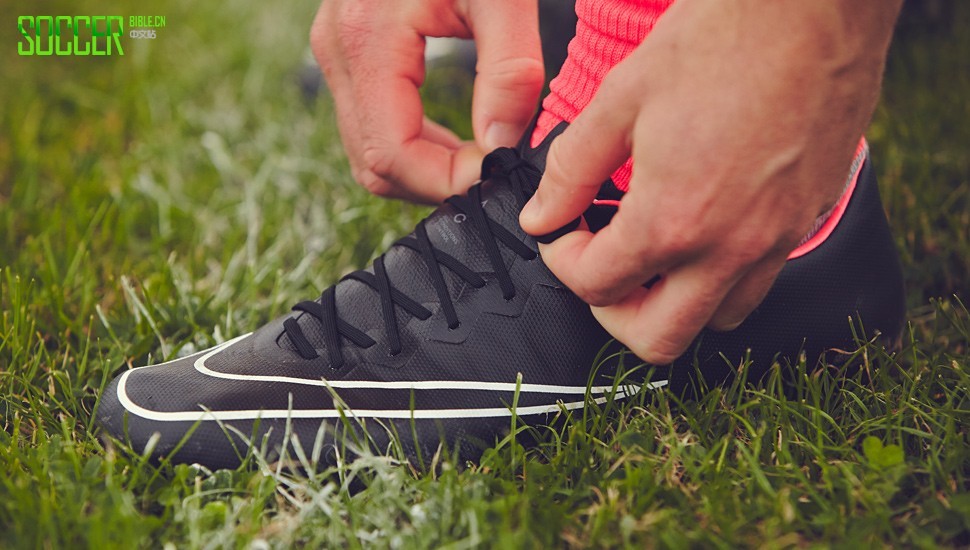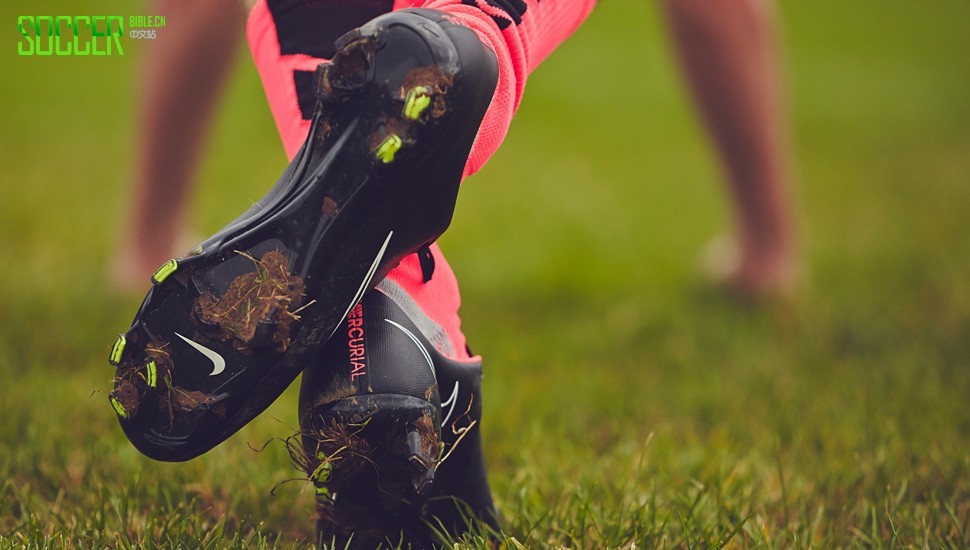Soccerbible中文站 一旦分享,没有距离。
本站内容由soccerbible全球翻译小组提供,严禁转载,违者必究!
The beginning of summer saw Nike Football release its two newest silos the Magista and the re-release of the revamped Mercurial Superfly. Both boots caused a storm within the industry, and along with the Hypervenom became the main focus of its promotional campaigns, however, with all the excitement surrounding these silos the release of the latest evolution of Nike’s longest remaining football boot was somewhat overshadowed.
Nike have always been at the forefront of innovation and from its initial introduction to the football world in 1998, the Mercurial series has always looked to buck trends and push boundaries. Now 16 years on, we are introduced to the tenth generation of Nike’s signature speed boot and the newest of its incarnations; the Mercurial Vapor X.

Without the Dynamic Collar Fit, the Flyknit upper and carbon fibre sole plate, it would be easy to consider the Nike Mercurial Vapor X as a simple step down from the Mercurial Superfly IV, however, to accept this opinion as true would do the boot no justice. Nike have been able to make changes from the Vapour IX and refurbish the boot to bring a product which can sit amongst the top end lines in the market.
At first glance, there are a few noticeable changes to the Mercurial Vapor X that differentiates it from its predecessor. Firstly and to our delight, the designers have removed the seemingly out of place ‘NIKE’ branding that was found on the inside of the Mercurial Vapor IX, replacing it with a smaller swoosh with its positioning similar to that of the Mercurial Vapor IV. It is also worth mentioning that the main Swoosh that covers the toe-box is larger than that of the Mercurial Vapor IX and removes the feeling of empty space on the forefoot of the boot.
Continuing with the success of the Teijin leather, the Mercurial Vapor X sees no changes where the upper is concerned. The microfiber synthetic material is ultra-thin and sits tightly around the foot, it is also soft and supple to allow the boot to stretch and mould to the shape of the wearer. What we don’t see on the upper are the golf ball inspired dimples that appeared on the Mercurial Vapor IX. Instead however, Nike have changed the texture slightly and renamed it “Micro Speed Control”; small sticky stripes that are designed to help improve your grip of the ball. No this advancement will not turn the wearer into a dribbling magician such as Hazard, Ribery or Ronaldo but its aim is to provide the boot with more friction between the ball and in turn give the wearer more control whilst running at high speeds.

The biggest difference between the Nike Mercurial Vapor IX and the new model is the tongue, or the lack of one, making the upper one single piece. Despite the obvious differences between the Mercurial Vapor X and Mercurial Superfly IV, Nike have stuck to creating the same feeling of a seamless fit. The tongue-less upper is coupled with a Teijin leather which allows the foot to be locked into the boot, giving the player more stability and improved interaction with the ground and ball. The one down-side presented by the lack of tongue comes when you're trying to get your foot into the boot. Even with the lowered heel-cup, this can be a challenged and will be even more difficult for players with wider feet.
To accommodate the new upper the lace configuration has been altered. Nike have introduced a double eyelet system which sees the lace go into the boot on one side and out of the boot on the same side. The purpose of this element is to reinforce that locked down feeling created by the upper.
The biggest improvement we found with the newest edition of the Nike Mercurial is the stud configuration. From our own experience of wearing the Mercurial Vapor VIII and IX, the stuf configuration was something that needed to be addressed. On the previous sole plates there were only two blades on the heel, though this created a lighter boot it took a lot of the stability away, not only that but the studs on the heel were prone to crack or break completely. The configuration of the blades at the front of the boot were shallow and didn’t take the ground too well. When conditions were wet you were lucky if you didn’t slip and fall when you were ready to accelerate.

The Mercurial Vapor X comes with a solution to these problems. The new and improved stud configuration sees the return of 4 moulded studs at the heel, something last seen on the Mercurial Vapor VII and provides more stability. There is also a different feel on impact on the heel which is slightly harsher. This could take some getting used to if you are a regular Mercurial wearer and are comfortable with the previous 2 blade heel design. The configuration in the front of the foot follows the same design as the Mercurial Superfly IV and the Hypervenom with its split-toe blade system.
This modification provides more traction in the boot on acceleration it also aids during stopping, turning and making sharp movements, the blades are also longer than the previous designs and provide a better contact with the surface you’re playing on. We found that whilst playing, due to the closeness of the upper to the foot the split toe design added a bit of pressure under the toe, this could be because the boots had not yet been worn in. However, it would be interesting to hear others opinions.
The Nike Mercurial Vapor X has been given fantastic upgrades and despite the reintroduction of the Mercurial Superfly, Nike are continuing to work hard to keep the Vapor at the top of the market. There is no need for the Mercurial Vapor X to be compared to Superfly, instead it should be seen as an alternative to those who do not wish to spend £230 on a pair of boots but still want a boot designed for speed. The improvements made are tremendous and show that the tenth generation speed boot has no intention of showing its age or slowing down.
The Nike Mercurial Vapor X is available at selected Nike stockists including Pro-Direct Soccer.